Pavilion @ Graphene Week 2023

The Graphene Week 2023 pavilion showcased graphene products and prototypes for a wide range of applications that exemplify the work accomplished by the Graphene Flagship over the past 10 years at Graphene Week 2023!
Take a quick tour the pavilion with former Graphene Flagship Vice Director, Vincenzo Palermo, and learn about graphene, its properties and applications currently under development.
The Dallara car, along with some other items featured in our Automotive article will be a big highlight for the pavilion demos this year. Come check out the car of the future!
Pavilion Demos
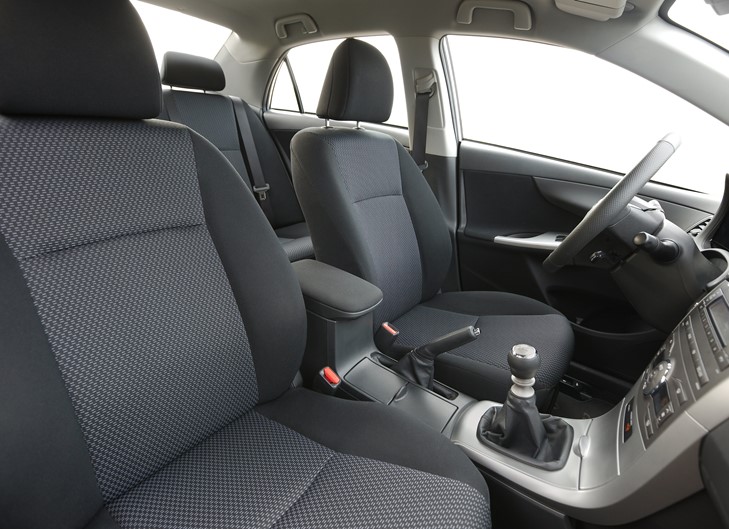
Heating fabric demonstrator for automotive applications
This non-elastic, but flexible, woven hybrid fabric is composed of PET multifilament, silver plated electrode threads and graphene containing conductive (high ohmic) monofilament. By supplying a voltage of 24 V, the latter allows a surface temperature of 50 °C to be obtained with an energy consumption of 0.440 kWh/m². These novel fabrics are useful for flexible heating devices in seats or side covers of cars, and show promise for deicing applications.

Printed security feature
Secure tickets were printed using unique graphene ink as a covert security feature. Authentic tickets are recognised by a capacitive sensor, whereas counterfeit tickets are immediately identified as being counterfeit despite visual appearance. This will have an important impact on existing security print/ticketing/anticounterfeit markets as an additional unreproducible security feature. The result is difficult to reproduce without using the specific graphene ink systems, leading to a reduction of end-user losses across many applications down to counterfeiting.
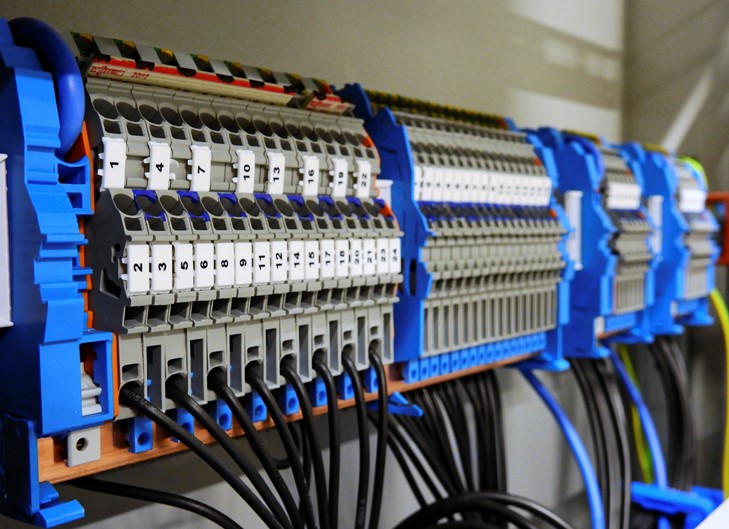
Circuit breaker
The CircuitBreakers Spearhead Project, funded by the Graphene Flagship, is developing a first-of-their-kind grease-free, maintenance-free, low-voltage circuit breakers for fault protection in key parts of the electrical grid. Replacing lubricating grease with self-lubricating metal–graphene composites will substantially reduce the need for maintenance and service, as well as extending the lifetime of these critical devices.
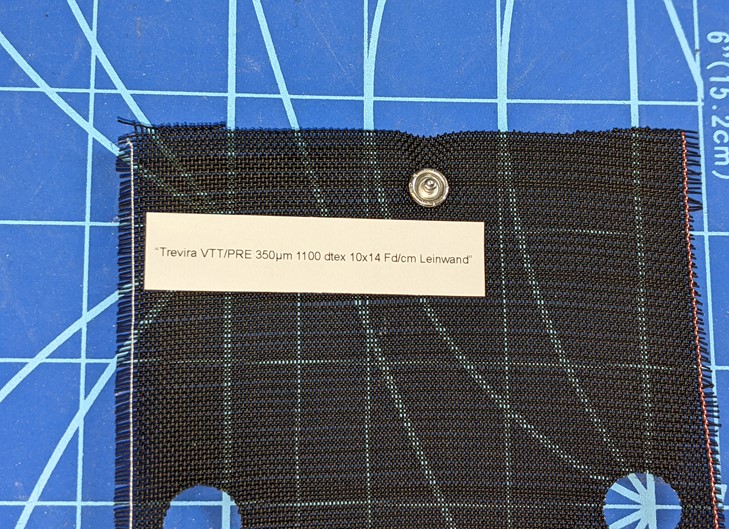
Graphene-based heating pads
Explore the demonstration boxes featuring graphene-based heating pads.
Within each box, the electronic framework seamlessly controls the heating pad, temperature sensors and user interface. Users can effortlessly manage temperature settings through smartphone app. Safety features ensure controlled operation. Whether powered by Grafren AB or CNR fabrics, these demonstration boxes highlight the convenience, performance and versatility of graphene-based heating pads.
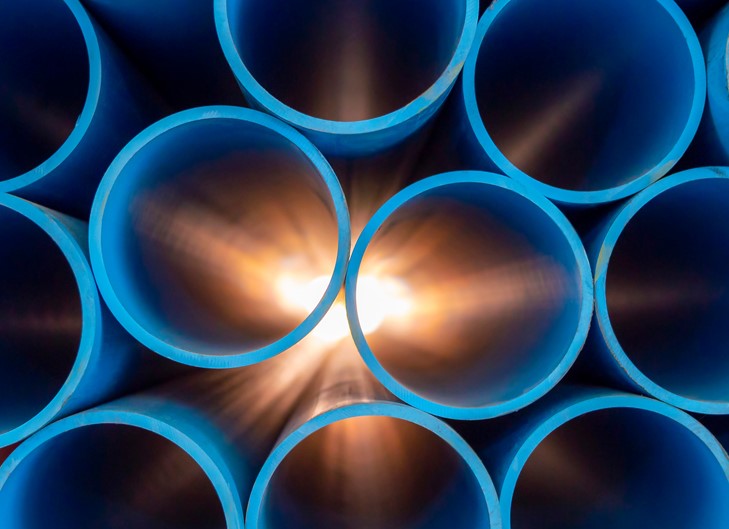
Electrically conductive and fire-retardant pipes
Pipes made of vinyl ester resin doped with two different graphene-related materials show good corrosion resistance, fire retardant properties and electrical conductivity. They are a more robust alternative to metallic pipes for oil and gas transport, with the added benefit of having sensing capabilities to detect geohazards or fire.
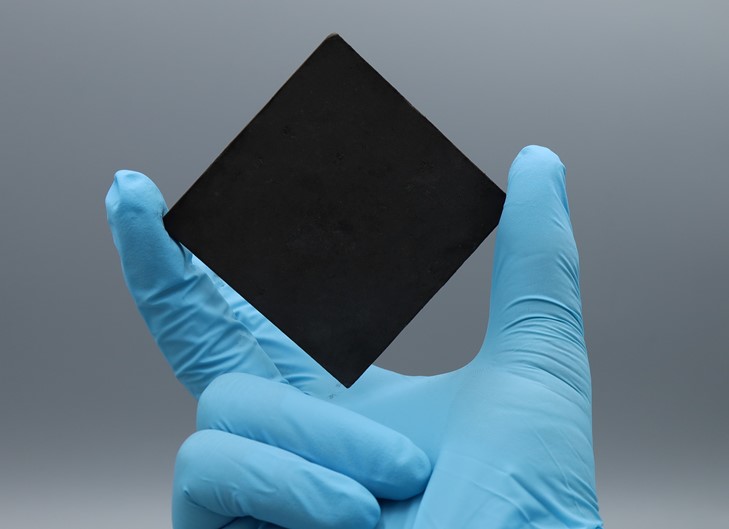
Aerographene foam
The Graphene Flagship AEROGRAFT spearhead project is building a sustainable, innovative air filtration system for passenger aircraft providing monitoring of environmental conditions, sterilisation of pathogens and self-cleaning, in addition to the effective passive removal of contaminants.
In this aero-material sample, made entirely of graphene and with a density ~0.002 g/cm3, the graphene sheets are assembled into interconnected micro-tubes with nanoscale wall thicknesses. The lightweight structure allows a considerable amount of air to pass through and can therefore be used as a functional filter or as a fast thermomechanical actuator with high gravimetric power density and high strain.

Camera
Graphene Flagship spearhead project GBIRCAM is developing an image sensor and camera system for the simultaneous detection of visible (vis), short-wave infrared (SWIR) and mid-wave infrared (MWIR) wavelengths. The broadband imaging (400 nm - 5000 nm) enabled by the GBIRCAM camera has a variety of possible uses, such as plastic and textile sorting. The image sensor could also help with surveillance in fog and smoke conditions, as well as monitoring applications, such as the detection of CO2. Suitably functionalised graphene offers the opportunity to combine the needed different waveband sensitivities onto a single substrate, enabling a broadband-sensitive single focal plane array.

Wafer AutoVision
GBIRCAM is developing an image sensor and camera system for the simultaneous detection of visible (vis), short-wave infrared (SWIR) and mid-wave infrared (MWIR) wavelengths. The broadband imaging (400 nm - 5000 nm) enabled by the GBIRCAM camera has a variety of possible uses, such as plastic and textile sorting. The image sensor could also help with surveillance in fog and smoke conditions, as well as monitoring applications, such as the detection of CO2. Suitably functionalised graphene offers the opportunity to combine the needed different waveband sensitivities onto a single substrate, enabling a broadband-sensitive single focal plane array.

Biodegradable electrodes
Graphene coatings were applied onto paper-based materials to create biodegradable electrodes.
The electrodes have been trialed to apply a small current across the roots of a seeds/seedlings. This current stresses the seedlings, promoting growth and inhibiting or even preventing pathogen attack to the roots. The application of electricity on plants can act as an abiotic stress elicitor and have long-lasting effects on plant growth, affecting photosynthesis and activating antioxidant defence systems against pathogens. Using graphene on paper allows these electrodes to naturally degrade as the plant matures, without leaching toxic metal salts into the soil.

De-icing
Ice accumulation on wings, propellers and other aircraft surfaces can be extremely dangerous. Graphene-based thermoelectric ice protection technologies keep aircraft ice-free, without affecting aerodynamic properties. Our ice protection system is compatible with Carbon Fiber Reinforced Plastic, flexible, light, consumes very little power, controls heat generation and could be process automated.
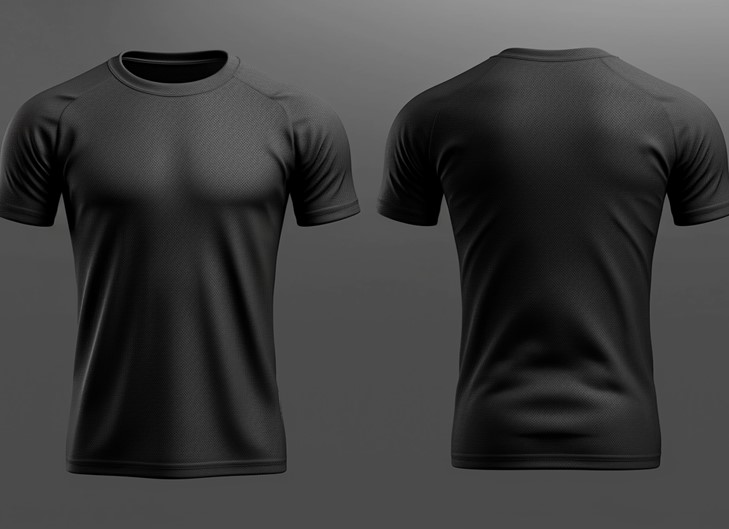
ECG T-shirt with graphene dry-electrode sensors
The T-shirt displayed here has been designed as a desirable wearable for ECG and EMG applications. The skin-contact sensors and fully printed wiring harness are all placed on the inside surface of the garment. The inks used are washable, resilient, and stretchable. The main application of graphene in this version of the demonstrator is in dry electrodes which make skin contact and eliminate the need for wet-gel application. A version with graphene inks for the wiring harness itself is in progress. The electronic module used in the demonstrator is capable of 5-wire (4 lead) ECG and 2 channel EMG and communicates via Bluetooth.
Monolayer graphene on silicon wafer
This silicon wafer is fully covered by monolayer graphene produced by chemical vapour deposition (CVD) and transferred to a circular substrate of SiO₂/Si (90nm) by a semi-dry transfer process. This is a benchmark product on the graphene market not only for its excellent quality, but also for its shape, size and number of applications. Applications include biosensing and optoelectronic and photonic applications.

Front end carrier
A decrease in the weight of automotive parts will represent a significant savings in fuel and corresponding costs and emissions over the lifetime of the vehicle. The Front End Carrier (FEC) is the structural panel which closes the engine compartment and supports the fixed components in the vehicle. Graphene obtained from pyrolyzed waste tyre is used as a reinforcing and nucleating agent to reduce glass fibre content in the serial part without any additional processing. By the integration of 1 wt% waste tyre driven graphene and the 10% reduction of long glass fibres in the FEC part, the new graphene enhanced part has the following properties: 1) weight reduction of 10.7%, 2) material price is not increased, 3) cheaper parts, 4) mechanical improvement, 5) no mould change or additional process and 6) 10% CO2 reduction.

Motorcycle helmet
Researchers from IIT and Italian design company Momodesign incorporated graphene into the exterior shell of this helmet as a coating. This coating allows better distribution of impact force and the excellent heat-conductive properties of the graphene dissipate heat quickly across the helmet, protecting the inner materials from thermal degradation. The result is a helmet with improved thermal comfort and safety.

Steering wheel and dashboard
Standard steering wheel heating systems based on heating alloy wires allow current to flow but do not offer heat distribution support. G+BOARD provides an alternative solution based on electro-thermal conductive graphene-polyurethane coatings on flexible supports for faster, more efficient, and more uniform heating at low manufacturing costs. Removing metal from the product not only decreases fuel consumption for the end user, but also improves the dismantling and recycling procedures for the wider automotive sector — a step in the right direction to meet the industry's environmental goals.
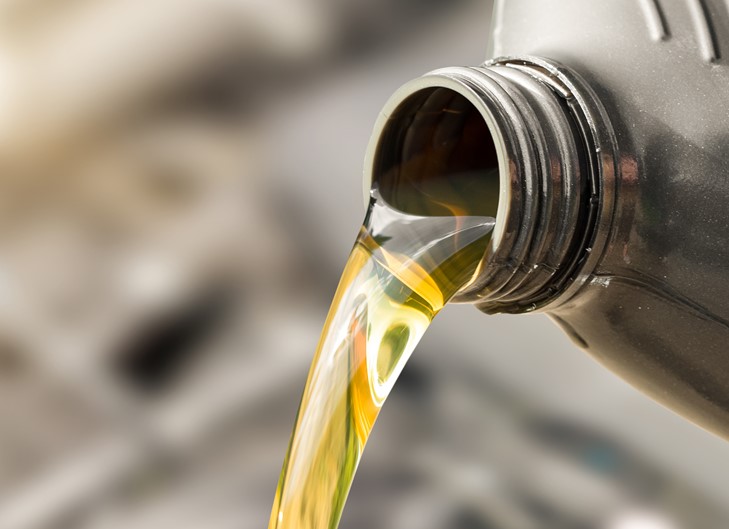
Graphene-enhanced lubricants
Lubricating oils with graphene keep engines safer for longer while reducing mechanical noise. They take advantage of graphene’s unique properties to reduce wear and tear in diesel and petrol engines, for both cars and motorcycles. Graphene acts as a strong lubricant due to its layered structure, which allows the atom-thin layers of carbon to easily slip and slide against each other, with hardly any friction. There are different products in the GTX-Lube range, to better respond to the particular needs of different engines.
300 mm wafer of monolayer graphene
The wafer shown is an example of monolayer graphene deposited onto a 300 mm wafer using a process called chemical vapour deposition (CVD). Graphene is a promising material used for photonics, optoelectronics and cutting-edge transistor design for their integration into next generation devices. To achieve the necessary quality of material for this, highly controlled wafer scale growth of atomically thin films is required. This wafer was grown in an AIXTRON Close Coupled Showerhead 2D reactor which can deposit graphene and other two dimensional layered materials at industry scales.
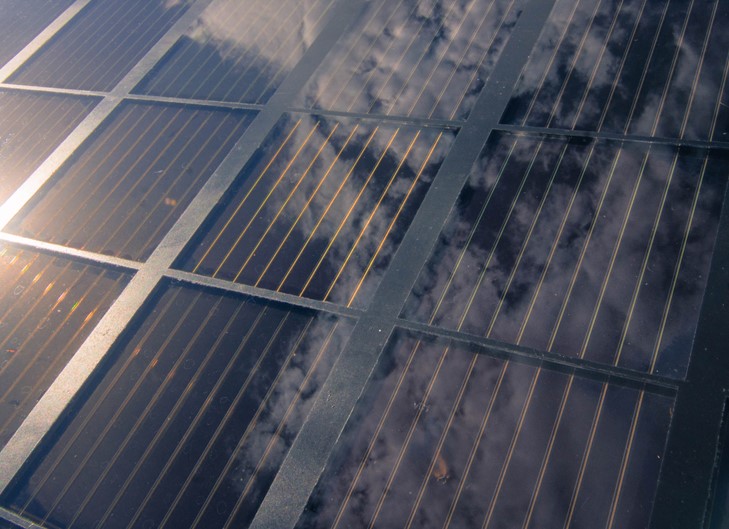
Solar cell
Most state-of-the-art solar cells today are based on silicon, and the industrial processes used to manufacture them are widespread and well-established. However, silicon cells are approaching their theoretical efficiency limits. This means that the improvements from developing new types of silicon cells are getting smaller and smaller, and new solutions are needed. The solar cells that are being developed by the GRAPES Spearhead Project are a unique fusion of silicon and perovskite technologies, enhanced by graphene. Thanks to graphene’s robust physical properties, the tandem cells are more stable than traditional perovskite cells. They are also more resistant to long-term light exposure and high temperatures. These are important properties for solar panels, which can heat up to 85 °C on a sunny day.

HTP leading edge
A graphene containing resin is the basis for this leading edge of an Airbus A350 horizontal tail plane.
The leading edge must possess excellent mechanical and thermal properties to withstand the extreme temperatures caused by compressive heating of the air ahead of the wing. Initial testing has shown that graphene increases the mechanical properties of the leading edge, enabling it to be made of thinner material, therefore decreasing its weight while maintaining its safety. Any decrease in weight will represent a significant saving in fuel and corresponding costs and emissions over the lifetime of the aircraft.

Graphene-enhanced water filtration
Many countries around the world do not have consistent access to safe drinking water in their homes, and billions of people rely on bottled water. The Graphil water filter can be fitted at the point of use to guarantee in-line access to clean water, wherever it is needed. Millions of hollow fibres made of a composite of graphene oxide and polysulfone are tightly woven together into a membrane which works as the filter. The membrane filters out particulate matter, as well as microorganisms, antibiotics, heavy metals and PFAs, to ensure a steady flow of safe water.
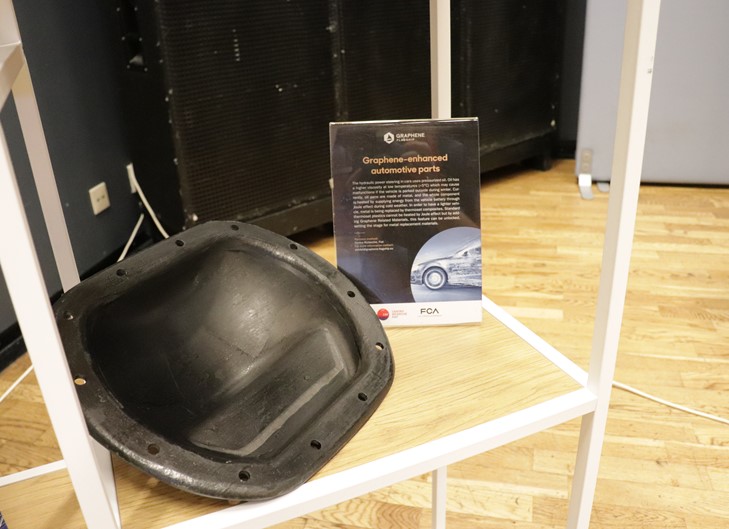
Graphene-enhanced oil pan
The hydraulic power steering in cars uses pressurized oil. Oil has a higher viscosity at low temperatures (<5°C) which may cause malfunctions if the vehicle is parked outside during winter. Currently, oil pans are made of metal, and the whole component is heated by supplying energy from the vehicle battery through Joule effect during cold weather. In order to have a lighter vehicle, metal is being replaced by thermoset composites. Standard thermoset plastics cannot be heated by Joule effect but by adding Graphene Related Materials, this feature can be unlocked, setting the stage for metal replacement materials.



